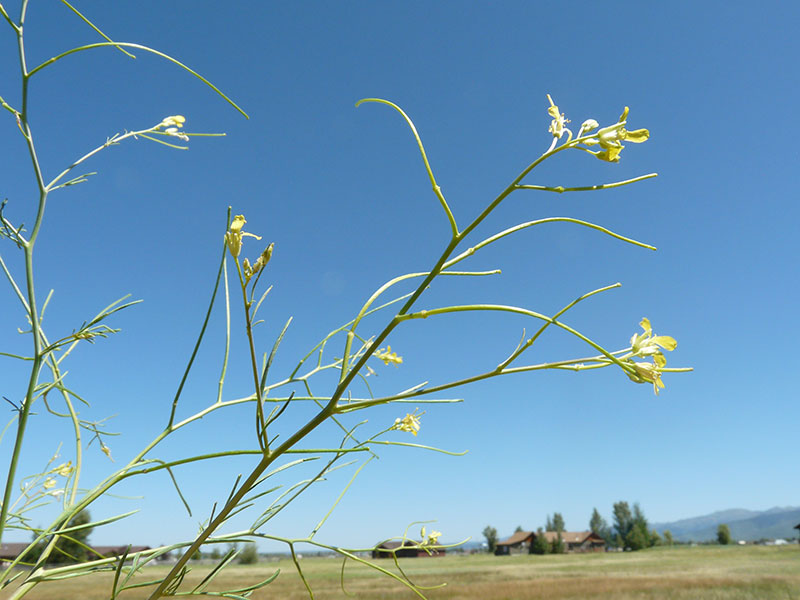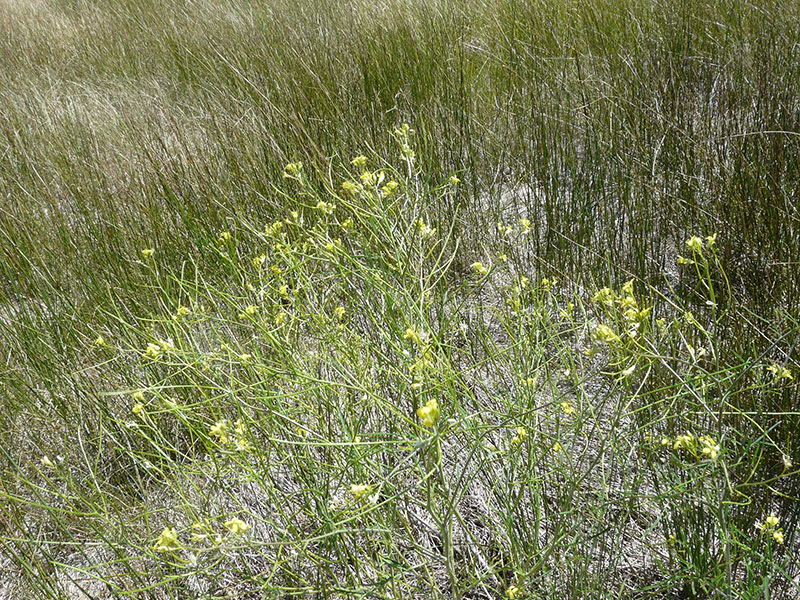Sisymbrium altissimum / tumble mustard
- inflorescence a raceme with yellow, teeny flowers
- long, thin seed pods (siliques)
- blooms throughout the spring and summer
- shoots look like a bunch of sticks glued together
- dries and breaks off, then tumbles
Also known as: Jim Hill mustard, tall hedge-mustard, tumbleweed mustard
As with other teeny-yellow-flowered, 4-petaled members of this family (Cruciferae, Brassicaceae), the flowers are of little help in identifying this species, other than to say it is a yellow crucifer. Instead, look to the stems and leaves. Young or over-wintering tumble mustard is a rosette plant that bolts – sends up a flowering shoot – in the spring. The basal leaves of young winter plants are rosettes, coarse and deeply lobed. Flowering plants are up to 5 ft tall, but “delicate”-looking. The stems are slender and much-branched. Stem leaves are divided into thin, linear lobes, while the basal leaves are broader and pinnately compound. Despite all this leaf stuff, on first notice the plant looks like a bunch of green sticks glued together.
Once the pods (siliques) develop, they are up to 4 inches long, supported by pedicels (stems) about the same length, terminated by a small hook, and pointing somewhat upward. As an annual, tumble mustard reproduces by seed only. As the mature plants senesce and dry, they tend to break off at the base and tumble in the wind, shaking the seeds loose as they tumble.
Tumble mustard is not fussy about where it grows and is common on roadsides, in small grain fields, on rangelands and waste areas and in other disturbed, unmanaged sites.
| Color | |
|---|---|
| Family | |
| Blossom size | |
| Inflorescence size | |
| Inflorescence type | |
| When? | |
| Where? |









